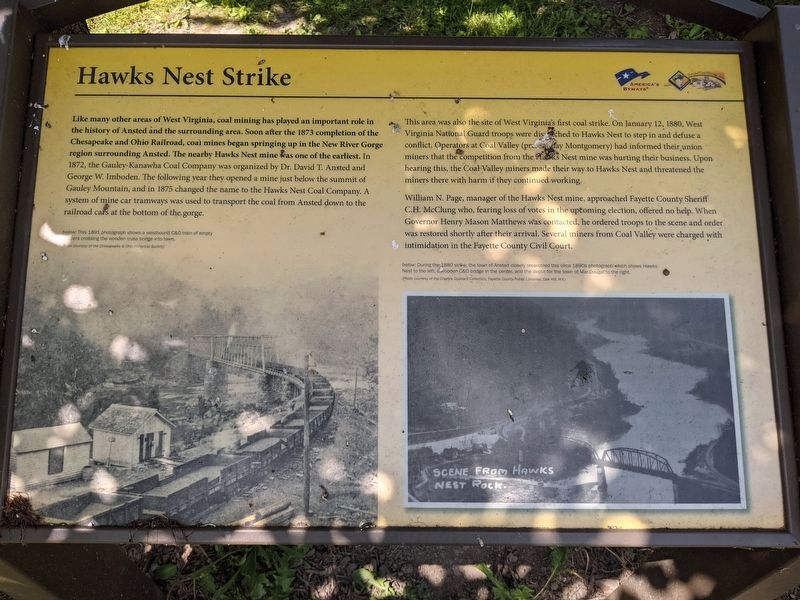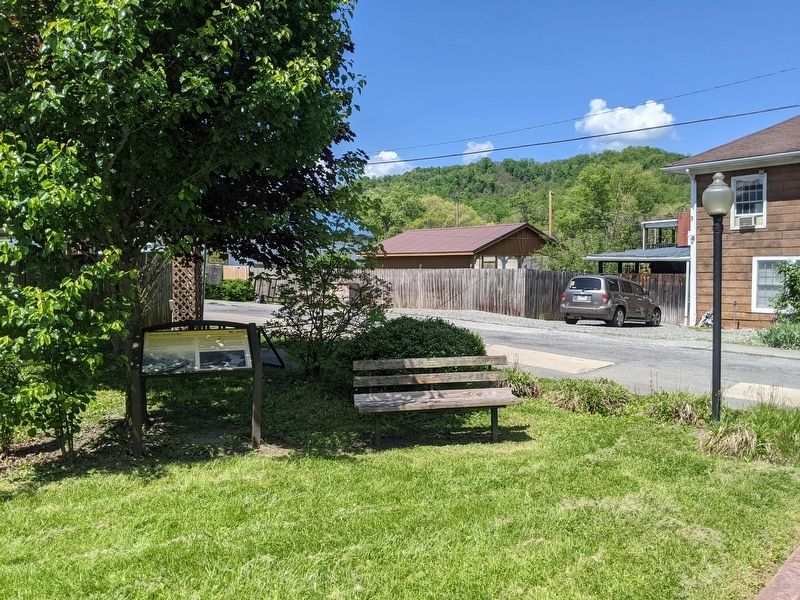
The Dust That Killed a Thousand: Unearthing America’s Forgotten Industrial Massacre at Hawks Nest
Deep within the Appalachian folds of West Virginia, where the Gauley River cuts its path through ancient rock, lies a scar on America’s industrial history. It is a story not of a mine collapse or a factory fire, but of a more insidious, slower killer: dust. Between 1930 and 1935, at a place called Hawks Nest, an engineering marvel intended to bring hydroelectric power to the burgeoning industrial might of the nation became a death trap for thousands of desperate men. This is the tragic saga of the Hawks Nest Tunnel disaster, a man-made epidemic of silicosis that stands as one of the most egregious examples of corporate negligence and human exploitation in U.S. history.
The year was 1929. The Great Depression was tightening its grip on America, casting a long shadow of unemployment and despair across the land. Yet, in the rugged hills of Fayette County, West Virginia, a beacon of hope, however dim, appeared in the form of a massive construction project. Union Carbide and Carbon Corporation, a titan of the chemical industry, aimed to build a three-mile-long tunnel through Gauley Mountain. The purpose was to divert the New River, creating a powerful hydroelectric dam to feed its electro-metallurgical plant in Alloy, West Virginia, essential for producing ferroalloys. For the thousands of jobless men—impoverished local whites and, predominantly, African American migrant workers from the Deep South—the promise of work, even at a dollar a day, was an irresistible lifeline.
Rinehart & Dennis, the contractor hired by Union Carbide, was tasked with the formidable challenge of boring through the mountain. The project was conceived with a relentless focus on speed and economy. High-powered drills, working around the clock, tore through the rock. The problem, however, was the rock itself. Gauley Mountain was composed of St. Peter Sandstone, a geological formation almost pure silica—upwards of 90% quartz. When pulverized by drills and blasting, this rock released an invisible, deadly snowstorm of microscopic silica particles into the air.

From the very beginning, the danger was palpable, if not immediately understood in its full, lethal scope. The air inside the tunnel was so thick with dust that workers often couldn’t see the man next to them. "It was like working in a snowstorm," recalled one survivor. "You couldn’t see your hand in front of your face." There were no respirators, no ventilation systems, and little to no safety oversight. Management, it seemed, was acutely aware of the dust but chose to ignore the pleas for protective measures, pushing for faster excavation rates. Workers were even paid by the foot drilled, an incentive that tragically prioritized speed over the most basic safety.
The symptoms appeared quickly. Men began to cough incessantly, a dry, hacking cough that rattled their chests. Shortness of breath followed, making even simple tasks agonizing. Many developed a severe pneumonia-like illness, collapsing on the job. Doctors in the area, often beholden to the company, frequently misdiagnosed these ailments as "tunnelitis" or "pneumonia," obscuring the true cause. But the truth was far more sinister: these men were slowly suffocating, their lungs hardening into stone. They were developing silicosis, an irreversible and progressive lung disease caused by inhaling crystalline silica dust, leading to scarring of the lung tissue and ultimately, death.
The demographics of the victims tell a chilling story of racial and economic injustice. Of the estimated 5,000 workers on the project, a significant majority—around two-thirds—were African American. They were drawn from states like Alabama, Georgia, and Florida, lured by promises of good wages and decent living conditions, only to find themselves in squalid, segregated camps, paid less than their white counterparts, and systematically assigned to the dustiest, most dangerous jobs at the tunnel’s face. While white workers sometimes worked as drillers, Black workers were disproportionately employed as muckers, shoveling the dust-laden debris, or as "nipper-boys," carrying dynamite through the thickest clouds of silica. This stark racial disparity in exposure meant that African American workers bore the brunt of the disease, suffering higher rates of illness and death.
As the body count mounted, alarm bells should have rung across the nation. Yet, for years, the tragedy remained largely hidden. Workers, often dismissed when they became too sick to work, returned to their homes across the South, dying far from the Hawks Nest site, making it difficult to tally the true human cost. Families, desperate for burial money, were sometimes given a paltry sum by the company in exchange for signing away their rights to sue. Rumors circulated of mass graves, of bodies hastily buried to conceal the true scale of the disaster.
It wasn’t until a few courageous individuals and persistent lawyers began to piece together the horrifying truth that the story of Hawks Nest started to emerge. Attorneys like Martin Pollack, initially hesitant to take on such a powerful corporation, eventually represented hundreds of victims and their families. They faced immense challenges: a transient workforce, often illiterate and impoverished; a powerful corporation with deep pockets and influence; and a legal system ill-equipped to handle the complexities of occupational disease. Proving causation was difficult, especially when victims had died years after leaving the tunnel.
The legal battles were protracted and arduous. In 1935, a congressional hearing was convened, bringing the horrific details into the national spotlight. Witnesses, many of them terribly sick or grieving, testified to the brutal conditions and the callous indifference of management. Dr. Emery R. Hayhurst, an expert in occupational diseases, stated that the conditions at Hawks Nest were "the worst I have ever seen" and that Union Carbide had been "criminally negligent." The hearings exposed internal company documents showing that Union Carbide’s geologists had identified the high silica content of the rock before construction began, and that the company possessed general knowledge about the dangers of silica dust in other mining operations. The evidence suggested a deliberate choice to prioritize profit and speed over human life.
Despite the damning testimony and overwhelming evidence of negligence, justice for the victims was agonizingly slow and ultimately, tragically incomplete. Of the thousands of claims filed, only a fraction resulted in compensation. The final settlement, reached in 1936, saw Union Carbide and Rinehart & Dennis pay out a total of approximately $130,000 for nearly 1,500 claims. After legal fees, individual victims or their families received an average of about $260 – a pittance that barely covered funeral expenses, let alone a lifetime of suffering or lost income. This outcome was a profound miscarriage of justice, reflecting the prevailing legal and social attitudes that often sided with powerful corporations over the rights of marginalized workers.
The exact death toll at Hawks Nest remains a subject of historical debate, a testament to the effort to suppress the truth. Official company records acknowledged only a few dozen deaths. The congressional investigation estimated around 476 deaths directly attributable to the tunnel. However, researchers and historians, accounting for the thousands of workers who dispersed and died later, often put the number much higher, ranging from 700 to over 1,000. Some estimates even reach as high as 3,000. Regardless of the precise figure, Hawks Nest represents one of the deadliest industrial disasters in U.S. history, a silent massacre perpetrated by dust.

The legacy of Hawks Nest, though often overshadowed by more dramatic events like mining disasters, is profound. It served as a stark warning about the dangers of occupational diseases and played a crucial role in shaping labor laws and public health policies. The tragedy contributed to the passage of the Walsh-Healey Public Contracts Act of 1936, which set basic labor standards for federal contractors, and later, the Occupational Safety and Health Act (OSHA) of 1970, which established the Occupational Safety and Health Administration to ensure safe and healthy working conditions. It highlighted the desperate need for stronger workers’ compensation laws and the recognition of occupational diseases as legitimate grounds for legal recourse.
Moreover, Hawks Nest stands as a chilling indictment of racial injustice. It laid bare how systemic racism compounded the dangers of industrial work, placing the most vulnerable populations in the most perilous positions. It’s a critical chapter in the history of environmental justice, demonstrating how the burden of industrial pollution and workplace hazards disproportionately falls on communities of color and the economically disadvantaged.
Today, the Hawks Nest Tunnel still stands, silently fulfilling its purpose of generating power. But for those who know its history, it is also a monument to human cost, a testament to corporate greed, and a stark reminder of the eternal struggle for worker safety and social equity. The dust that killed a thousand men may have settled, but the lessons it imparts about vigilance, responsibility, and the value of every human life remain as vital and urgent as ever. Hawks Nest is not just a forgotten tragedy; it is a permanent warning etched into the very rock of America.


